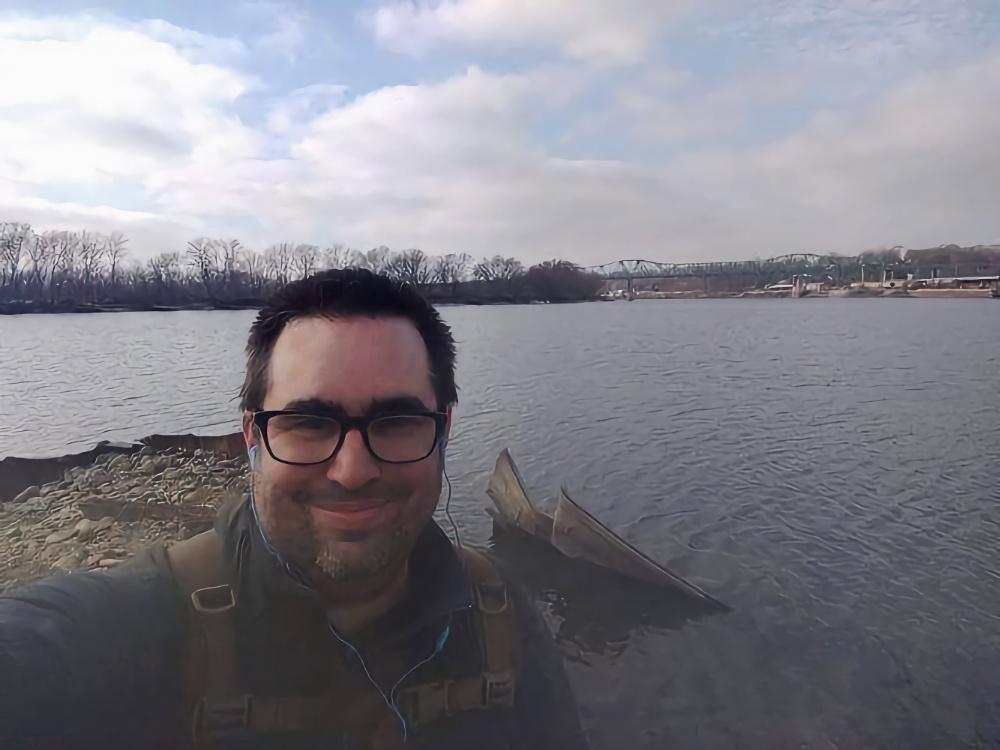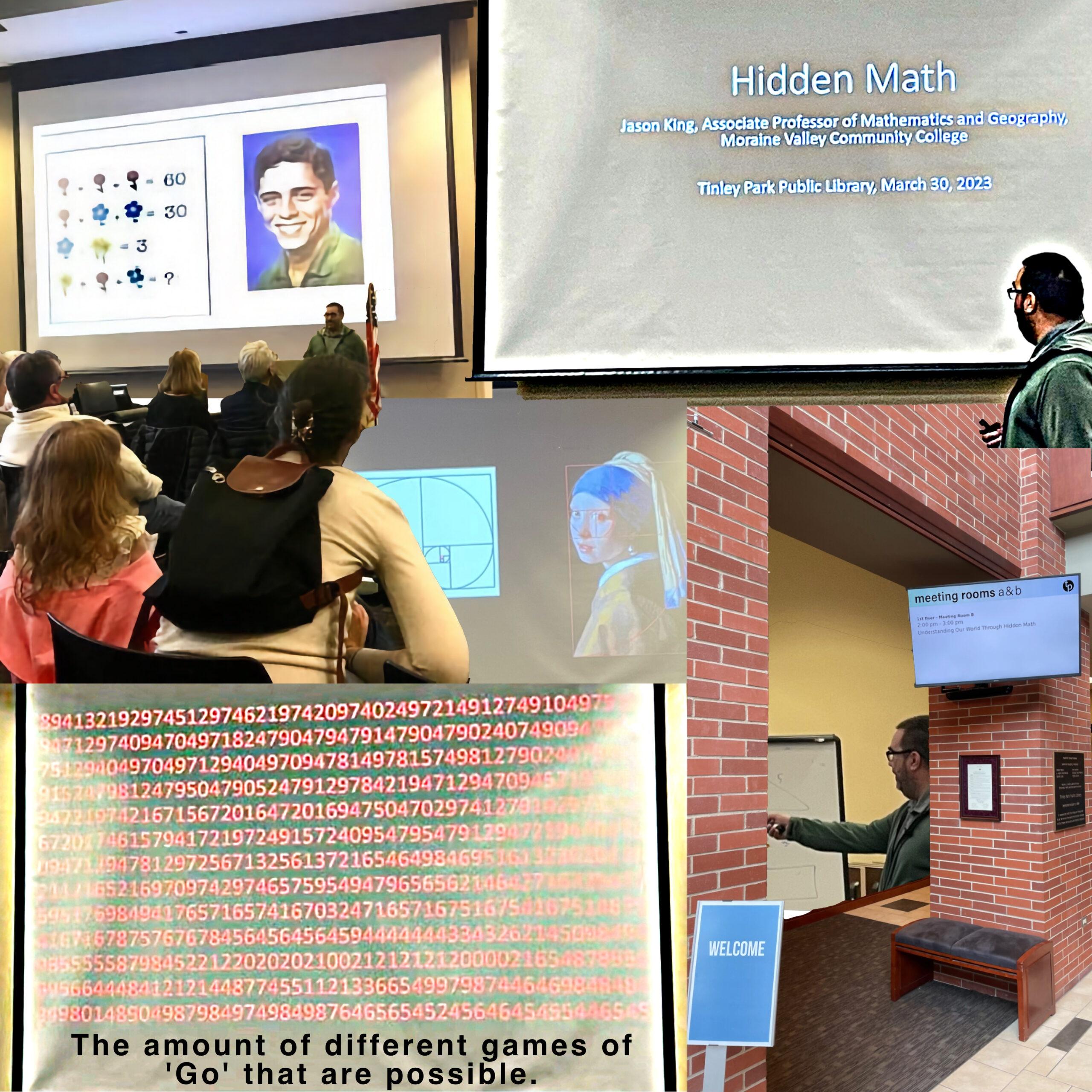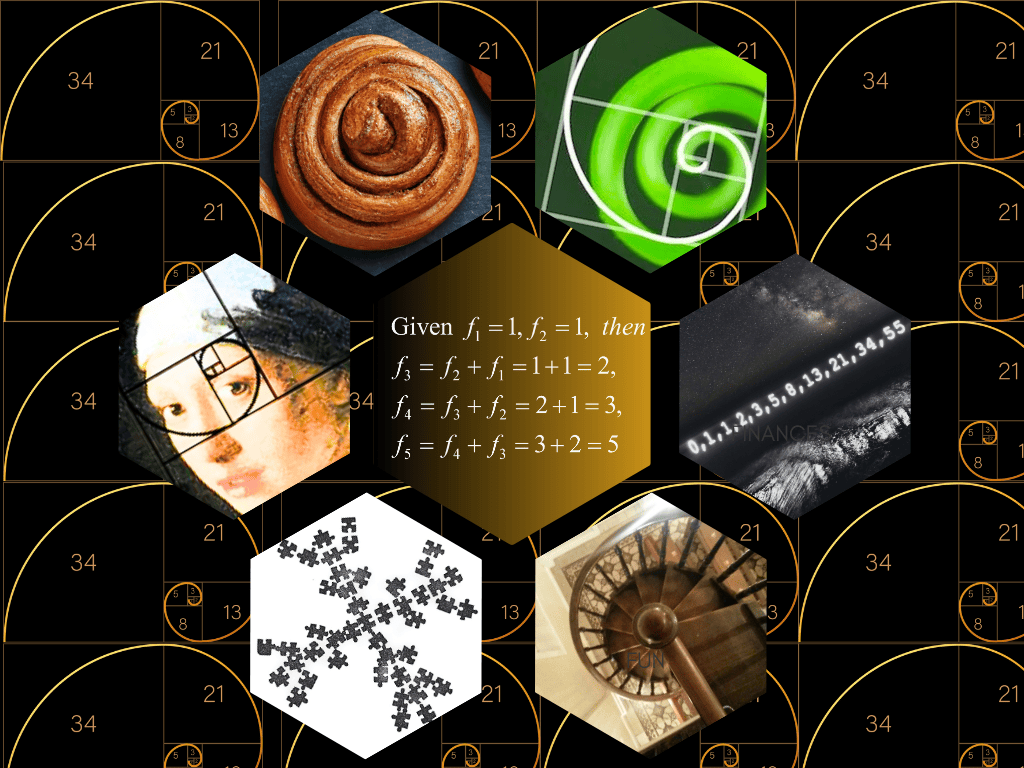Jason King On The Stunning Ways We See Math in the World
Article Content
AI (Artifial Intelligenec) is one of the terms-du-jour and if you want to better understand it, it’s a lot like Mother Nature herself. And I learned this and many other hidden truths about math thanks to a local professor named Jason King, who gave a fun lecture at the Tinley Park Public Library earlier today.
By the end of the lecture my mind was blown because I had achieved an actual clear understanding (not mastery mind you) of how mathematicians and STEM folks can say that math is all around us. Maths is life itself—yes maths is the proper grammatical way to refer to it.
For the unfamiliar, S.T.E.M. is the acronym for the integrated curriculum of Science, Technology, Engineering, and Mathematics—which all together equip children and adults with a wide range of care and life applications.
Jason King, Professor of Mathematics

Jason King is Associate Professor of Mathematics and Geography at Moraine Valley Community College. He also happens to be a dad, husband, and creator of one of the most robustly informative resources and popular forums for Chicagoland parents and people: Playgrounds and Parks of Chicagoland.
Professionally—Jason is a graduate of Moraine Valley, Illinois State University and of DePaul University. He is a former cartographer for the Frederick Blum Neighborhood Assistance Center at Chicago State University. He was the 2012 recipient of the Master Teacher of the Year Award at Moraine Valley, which make sense since Jason has an average teacher rating of 4.8/5 according to RateMyProfessor.
FUN FACT ABOUT JASON: His great grandpa was one of the builders of the Chicago South Shore and the Steel Mills.
Suffice it to say it was nice to meet the helpful guide from whom’s group I owe a lot to my early parenting years. I brought my daughter a long with me to Jason’s lecture, despite my better judgement, but Jason actually captured her attention for most of his presentation. Those with 5 year olds know how huge that is to do!
The big goal in my bringing my daughter along to this lecture was to make an out of the ordinary impression on her imagination about maths. And Jason was a perfect early catalyst with his presentation style and preparedness. As a parent I really appreciated his patience and giving of his time to my daughter at its conclusion, before the room emptied.
Jason’s Itinerary On Hidden Math
- What is math? Like, seriously —what is it?
- Numbers That Don’t Exist, and Dimensions Between Our World
- Dark Mathematics: The Math of Very Small and Very Large Numbers
- Math and The Limits of Human Understanding
Understanding Our World Through Hidden Math
Thursday, March 30
2:00pm – 3:00pm
Tinley Park Public Library
1st floor – Meeting Room B
Speaker Bio: Jason King
Moraine Valley Mathematics Professor Jason King sees math not as a series of complicated equations, but rather as a fascinating way to understand our world and solve puzzles. In this presentation he will talk about hidden math we don’t see (like fractal geometry), math in very few and very large dimensions (like understanding taxicab geometry and hypergeometry), tessellations, thinking about infinity (and infinities that are more infinite than infinity) and more.

My Takeaways From Hidden Math
- Maths is more akin to philosophy than science, a language we just need to learn in order to underestand it. Not as black and white as bad math teachers had us believe.
- Math is fun and full of surprises.
- Utilizing graphs, tables, charts, maps, colors and diagrams is the best way to learn and retain maths for visual learners—which are most people (65% according to most research).
- The Fibonacci Sequence, Ratio, and Number are truly “Golden.” It’s the basis for much of nature and modern technologies.
- Hidden patterns and sequences are how mathematics forms the building blocks of life and our world. More specifically fractals. Visual patterns that repeat themselves on smaller scales that we often see in nature (snowflakes, pineapples, leaves, bubbles, etc.) are the proofs.
- There exist numbers, formulas and concepts that the human mind can never be able to understand or replicate. For instance, Pi is infinite and, by definition, unknowable. Then there’s dark math, like black hole theories. So maths is really quite magical and astounding.
- Playing games and solving puzzles, etc. are deceptively strongest ways to get your kid into maths and prepare their brains for the twists and turns. Jason recommended one of the oldest games in history, which kids in Asia are encouraged to play, which is called Go or Weiqi or Baduk.
- After his lecture Jason shared with me a Facebook group he started for folks who want to get together to learn and play the ancient game: Chicago Southwest Suburban Go/Weiqi/Baduk Club. I think us parents need to jump on this!
- Mathematician Georg Cantor deserved better.
- Musikalisches Würfelspiel: A system used by composers like Bach and David Bowie (except with paper) to randomly generate music from precomposed options—using dice. It is essential using the mathematical principle of probability, the way AI sort of goes about generating content.
Helpful Links From Jason’s Handout
- Mathematics of the Rubik’s Cube (for Beginners): https://www.mcgilltribune.com/sci-tech/1928514/
- Scott Czepiel And The Math Behind A Deck Of Cards: https://czep.net/weblog/52cards.html
- The First Million Digits Of pi: https://www.piday.org/million
- How To Make Voronoi Diagrams (And More About Voronoi Diagrams): https://www.instructables.com/Hand-Drawn-Voronoi-Diagrams
- Boolean Pythagorean Triples Problem and Computer-Generated Proofs: https://tomrocksmath.com/2022/08/30/the-longest-ever-proof-computer-assisted-provers-and-organising-pythagorean-triples
- How Target Figured Out A Pregnancy Before A Family Did: https://www.forbes.com/sites/kashmirhill/2012/02/16/how-target-figured-out-a-teen-girl-was-pregnant-before-her-father-did
- OpenAI ChatGPT: https://openai.com/blog/chatgpt

Further Reading
A Rethinking Of Cantor And Infinitary Mathematics By The Creator Of Vopěnka’s Principle (April 2023)
The Math Of Living Things By Sidney Perkowitz (June 23, 2021)
Math In Nature: 5 Stunning Ways We See Math In the World – Math Geek Mama (July 8, 2019)
